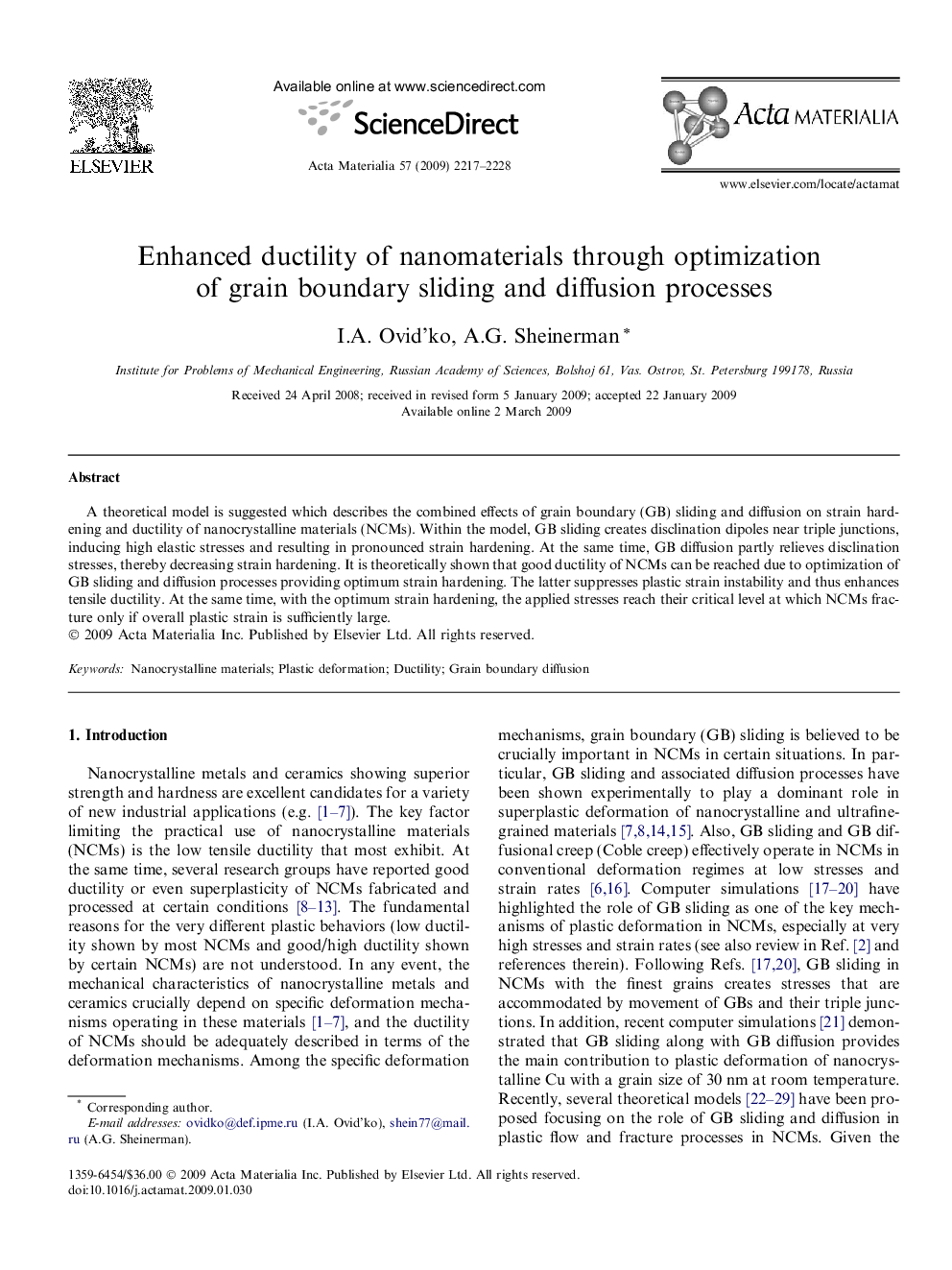| Article ID | Journal | Published Year | Pages | File Type |
|---|---|---|---|---|
| 1448602 | Acta Materialia | 2009 | 12 Pages |
A theoretical model is suggested which describes the combined effects of grain boundary (GB) sliding and diffusion on strain hardening and ductility of nanocrystalline materials (NCMs). Within the model, GB sliding creates disclination dipoles near triple junctions, inducing high elastic stresses and resulting in pronounced strain hardening. At the same time, GB diffusion partly relieves disclination stresses, thereby decreasing strain hardening. It is theoretically shown that good ductility of NCMs can be reached due to optimization of GB sliding and diffusion processes providing optimum strain hardening. The latter suppresses plastic strain instability and thus enhances tensile ductility. At the same time, with the optimum strain hardening, the applied stresses reach their critical level at which NCMs fracture only if overall plastic strain is sufficiently large.
